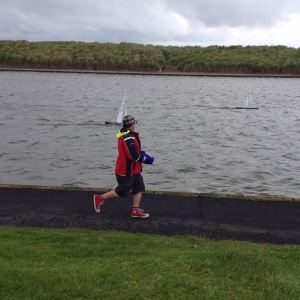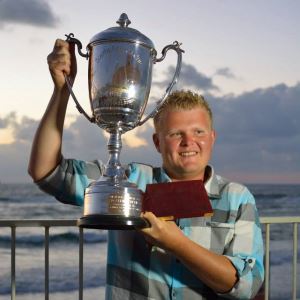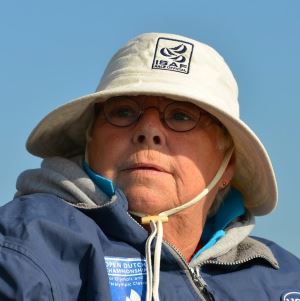
History starts over 3000 Years ago

Model boats can be found throughout history from Egypt to China. One of the oldest “model sailing ships” is a 4000 year old clay boat originally discovered in the old Mesopotamia region and now preserved at the Israel Museum in Jerusalem. (source; Wikipedia)

Vane controlled sailing started over a hundred years ago at the beginning of the 20th century. A gadget, called the “Vane”, is controlled by the wind and it in turn keeps the steering (rudder) and sails in their correct position to sail across a pond. It is similar to the idea of a “cruise control” in modern cars. This was a very popular way to race model yachts up until the advent of modern radio controls. Vane sailing is still popular in some places across the world.
Radio Sailing is a Sport to be Enjoyed by Everyone
There are World, Continental, National, Regional and Club Championships going on all over the World. If you want to find out more or jump in and have some sailing fun, find a club near you and introduce yourself.

start as young as possible
Sometimes the boat outruns the sailor


become a world champion
A self-policing sport
Radio sailors enforce the rules themselves. Competitors not racing act as observers and hail contact between boats. Skippers are expected to take a penalty if they have broken a rule.
If they do not, experienced sailors will adjudicate after the race and decide if a boat should be disqualified.



Radio Sailing is great fun
"A boat and her owner shall compete in compliance with recognized principles of sportsmanship and fair play.”
Racing Rules of Sailing.

Concentration

Sportmanship

Enthusiasm

Friendship
Radio Controlled sailing in different Classes
IMCA is the class authority for the International Marblehead Class, ITCA is the class authority for the International Ten Rater Class , IRSA acts as the class authority for the International "A" Class and the IOMICA as class authority for the International One Metre Class.

Marblehead
Open class, box class
Carbon hulls, foils and spars
Hull length 1.3 m
Displacement 4.5 to 5.5 kgs
Draught 660 mm
Sail area 0.5161 m²

Ten Rater
Open class
Waterline length x Sail area = constant
Carbon hulls, foils and spars
Hull length 1.3 to 1.8 m
Displacement 5 to 7 kgs
Draught 700 mm
Sail area 0.9 to 1.1 m²

A Class
Open class with formula to calculate the rating
Carbon hulls, foils and spars
Hull length 1.6 to 1.9 m
Displacement 12 to 18 kgs
Draught 300 mm
Sail area 0.9 to 1.1 m²

One Metre
Box class, OneDesign rigs
Glass hulls, carbon foils and alloy spars
Hull length 1 metre
Displacement 4 kgs
Draught 420 mm
Sail area 0.6 m²
Building Boats
From hi-tech specialists carbon fiber racing machine to the self-designed and manufactured entirely in Homework Club Racer everything is possible!

Building Boats

Wind tunnel

Design



